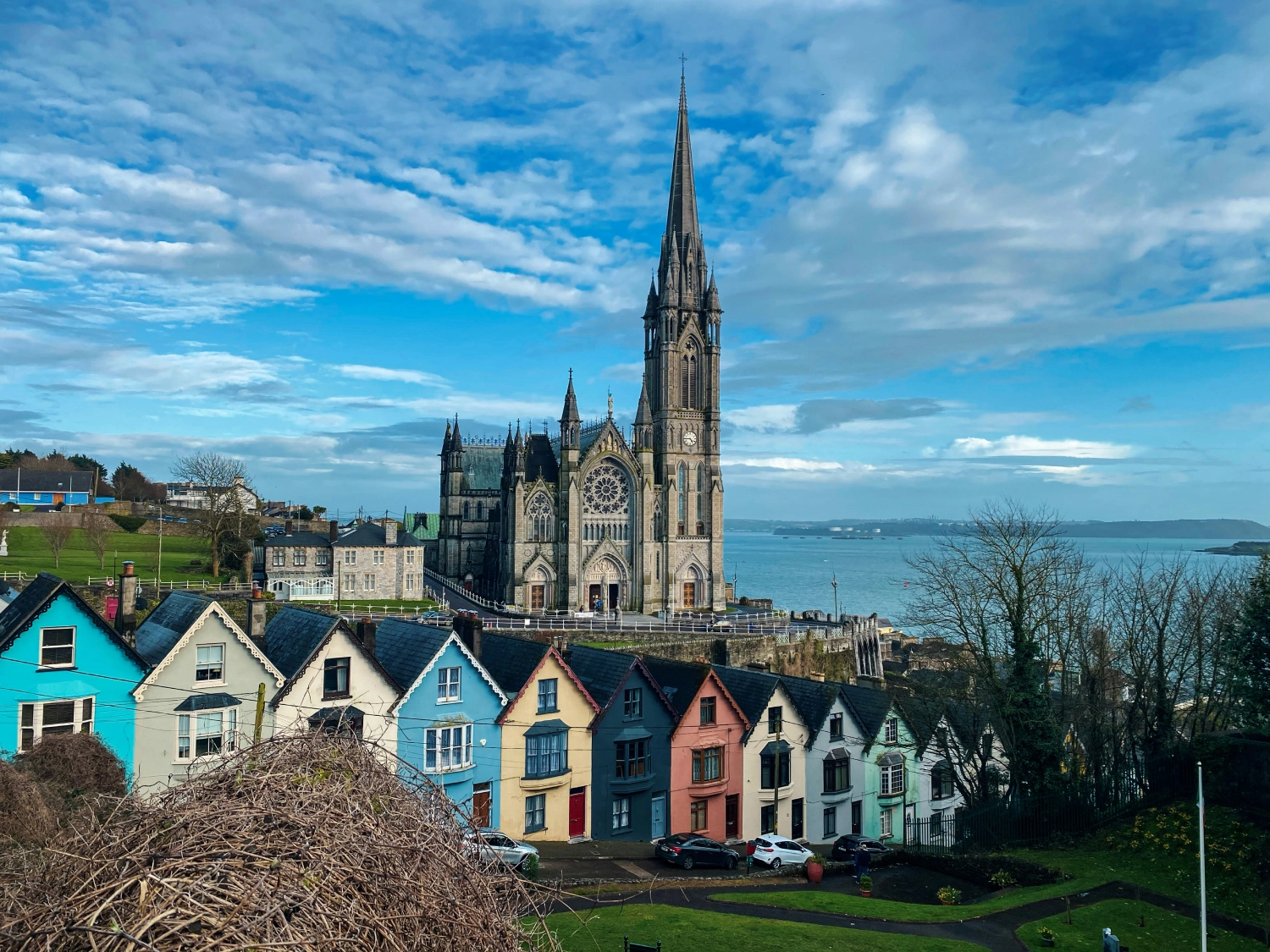The history of Ireland goes back thousands of years. People have lived there for a very long time, starting around 33,000 years ago. More evidence shows human presence from about 10,500 to 7,000 BCE.
If you're planning to study in Ireland and want to learn more about its history, you've come to the right place. Irish history is like a big storybook filled with tales of battles, culture, and strength that’s coming all the way from the prehistoric period (age-old days) to today. While learning about the history of Ireland, you’ll find that it is filled with rich folklore and magical creatures like leprechauns who hide pots of gold at the end of a rainbow and the legendary Saint Patrick, who the locals believe chased away snakes and used a three-leafed shamrock to explain the Christian Trinity. There's just so much to discover. Join English Path on a journey through time to learn the fascinating history of Ireland and make your stay on the Emerald Isle even more enjoyable.
Prehistoric period: The beginning of Ireland and its fascinating history
Thousands of years ago, before the hustle and bustle of cities, the people of the Stone Age lived in Ireland. They used stones to create tools and left behind fascinating structures that are even older than the famous pyramids of Egypt! These structures give us a glimpse into the history of Ireland.
- Neolithic period: During the prehistoric period in Ireland, people started living in small communities. They began to raise animals and grow crops on farms.
- Bronze and Iron Age: People who lived during this time in Ireland were very good at building things. They built big stone tombs, jewellery, weapons, and other metal objects.
Although not many things have survived from the prehistoric period that ended around 500 BC, the remains of some ancient buildings can be seen around old forts on hills and cliffs in Ireland even today.
Tuatha Dé Danann: The supernatural race in Irish mythology
According to Irish folklore passed down through generations, long before the Celts arrived, there was a supernatural Irish race called the Tuatha Dé Danann who lived here. These were special beings with supernatural powers, including kings, queens, druids, bards, warriors, heroes, healers and craftsmen. They are also known as "the folk of the goddess Danu." Legend says they are the ones who gave Ireland its name.
The arrival of Celts: People living near Massilia (modern Marseille)
If the old Irish legends are to be believed, when the Celts (Indo-European tribes) arrived in Ireland around 500 BC, the Tuatha Dé Danann, the tribe of gods, sent three of their goddesses, Banba, Fodla, and Ériu, to welcome them. Together, they named the land after Ériu, which later changed to Éirinn and eventually – Eireann. The Celts brought with them their language, customs, and beliefs, which influenced the culture of Ireland for centuries to come. Even today, we can still see the impact of the Celts on Irish art, music, and language.
The Viking invasion: The expert sailors who travelled in longships
After the Celtic people came the Vikings. They were warriors from Scandinavia who invaded Ireland during the early Middle Ages. They attacked villages near the coast and even built their own towns. This time, called the Viking Age, lasted from around the late 8th century to the early 11th century. It was a time of both fear and trade. The Vikings built settlements in Dublin, created new opportunities for travelling, and introduced Ireland's first coin currency, which had a big impact on Irish history.
The arrival of the Normans: The first British colony
In 1169, a group of people called the Normans, led by a man named Strongbow, invaded Ireland. They brought new ways of farming, built castles, and were a link between Ireland and England. By 1300, nearly all of Ireland was controlled by the Anglo-Normans, and Ireland became the first British colony. This marked the beginning of many years of English influence on the island.
The English rule grows: Ireland fights back for freedom
As time passed, more English people came to Ireland, and their influence increased. For over 700 years, the Irish lived under the rule of the English and later the British Empire. This caused tension and disagreements, which often led to fights and changes in who owned the land. Irish civilians fought hard against English control, but it only got stronger. This led to uprisings like the 1798 Rebellion, where Ireland showed its strong will to fight for what it believed in.
The Great Irish Famine: A deadly disease takes millions of lives
A disease attacked the potatoes in Ireland, causing a terrible event known as the Great Hunger of 1845-1849, also called the Irish Famine outside of Ireland. This made many people unable to pay their rent or debts and left them without enough food to eat. Sadly, millions of people either died or had to leave their country. The Great Hunger was one of the most tragic events in 19th-century Europe and had a big impact on Ireland and its people. Even today, Ireland's population hasn't fully recovered from the famine.
The Easter Rising: Ireland’s struggle for independence
For a long time, Ireland was ruled by England, and their relationship was difficult, filled with arguments and fights. Then, on Easter Monday, April 24th, 1916, there was a rebellion in Dublin called the Easter Rising. The aim was to get rid of British rule and set up an independent Irish Republic. After lots of protests and battles, Ireland finally became independent from Britain in 1922. However, Northern Ireland still remains a part of the United Kingdom.
Ireland today and tomorrow

After becoming independent, Ireland has changed a lot in terms of its society, economy, and culture. Today, Ireland is a lively and welcoming island known for its vibrant culture, beautiful scenery, and friendly people. It's a country with a fascinating history, a friendly attitude toward visitors, and a passion for storytelling, music, and dancing.
As we complete our journey through Irish history, we hope you've enjoyed learning about the interesting events and people who made this lovely island what it is today. From ancient civilisations to modern-day marvels, the history of Ireland shows its people's strength, determination, and spirit. So, whether you're planning to study in Ireland or just curious about it, remember, this was just a peek into Irish History. There's so much more to discover! Keep exploring, keep learning, and stay curious!
Frequently asked questions about Irish history
Q2. What languages are spoken in Ireland?
The official languages of Ireland are English and Irish Gaelic. Most people speak English in everyday life, but Irish is taught in schools and used in government and cultural activities.
Q3. What was the biggest event in Irish history?
It was ‘The Great Famine.’ A potato disease that destroyed Ireland's main food source in the 1840s, causing a terrible famine. Many people died or moved to other countries, and the history of Ireland was changed forever.
Q4. When did Ireland gain independence?
After a long struggle for freedom, Ireland gained independence from Britain in 1922. However, Northern Ireland remained part of the UK.
Q5. What are some famous Irish traditions?
Ireland is known for its rich cultural traditions, including Celtic music and dance, storytelling, and festivals like St. Patrick's Day.


